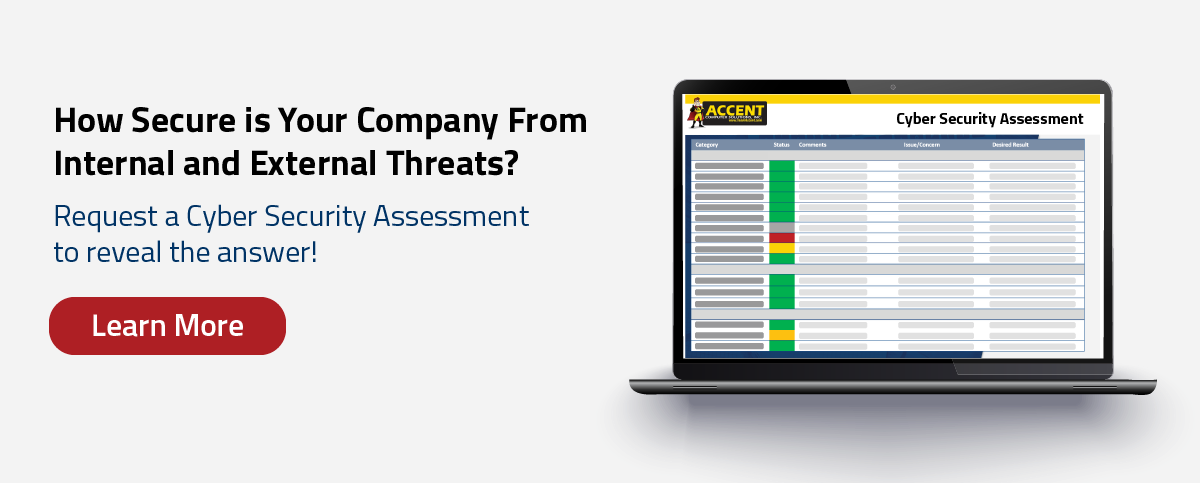In the same way that you might bait a hook to reel in while fishing, hackers try to bait individuals and businesses through the method of what is called phishing. This cyber phishing “bait” may not seem as obvious as a sparkling plastic lure on a hook - unless you know what to look for.
Why is Phishing a Concern?
Phishing is one of the most common types of hacking, especially targeting small businesses. These attacks can also carry some of the highest consequences. The Sans Institute Incident Response Survey cites phishing as the primary and most impactful cyber threat of 2017. With phishing tactics always evolving, it is more important than ever to protect your information from these attacks.
However, this is no reason to be scared! Although phishing proves to be a threat, it is also a threat that can be prevented. With proper anti-phishing software and education, businesses have the opportunity to protect themselves from cyber risks.
Phishing Emails With a Trustworthy Disguise
Phishing content is usually found in the form of suspicious-looking email that tricks the receiver into providing personal or business information. Usernames, passwords, bank information, and client information are all at risk when you fall for a phishing scheme.
A good phishing tactic will not look so suspicious and is easy to fall for when you do not know what to look for. Emails will more than likely appear to be legitimate and might link you to a website that, for example, looks just like the Bank of America where you would normally trust giving your information.
Security Awareness Training to Recognize Phishing Attempts
Cyber security awareness training teaches people how to spot a phishing attempt so that they can avoid falling into the phishing trap. Yet, some phishing frauds are much more difficult to recognize than others. Luckily, anti-phishing software provides another layer of protection to stop phishing emails from making it into users' inboxes in the first place.
Benefits of Anti-Phishing Software
Anti-phishing software prevents suspicious emails from reaching the receiver and also blocks suspicious sites that may be linked in an email. This layer of cyber protection is essential as it will help prevent one of the most common types of hacking attempts.
Allow Email Traffic with Whitelists
Anti-phishing programs also allow for whitelists. Whitelists track messages from senders that might falsely be blocked. Let’s say communication between employees gets wrongly flagged for phishing, whitelists make sure that you receive all of the emails you need.
Identify Patterns of Attack
Anti-phishing software will create a historical log of possible phishing threats. This is convenient for businesses, as it is good to know that the anti-phishing system is a success, and it also allows you to see if there is a pattern of attack that you can avoid in the future.
Identifying a pattern of attack through reports helps avoid human error. Let’s say that multiple phishing attempts are targeting employees by calling for their help by posing as the company’s owner - reports let you track those attacks so that you can educate your staff on what to look for, and avoid.
When Someone Takes the Phishing Bait
Without incorporating an effective anti-phishing program, your business and your clients are at risk for fraud and even ransomware attacks. In one case, an accountant clerk at a large insurance company compromised their email account through phishing fraud.
This meant that the hackers could then send and receive emails from the email account of the accountant clerk. This allowed the hackers to reach out to one of their customers, convincing them to wire transfer several hundred thousand dollars to a remote account.
This is just one example of why anti-phishing software is a necessity for any business and individual. Fortunately, the process of deploying this software is easy and does not disrupt your daily operation.
Anti-Phishing Software Easy to Deploy
Installation of anti-phishing software is easy and does not require any user training. Users do not interact with the software directly and may not even realize that it's actively watching their inbox for suspicious messages. In other words, once anti-phishing programs are installed, all you have to do is carry on business as usual with the comfort of knowing your information is safer than it was before.
Most anti-phishing programs are cloud-based, which usually means that all email is scanned or routed to the anti-phishing system. This means that there isn't a physical server or software needed to be stored. This saves time and physical space for small businesses. It is also more reliable since cloud server companies specialize in ensuring the safety and efficiency of the cloud.
Manage Risks With a Layered Security Approach
Although incorporating anti-phishing software into your IT plan is a necessity for protecting your business, minimizing human error is also important. Educate your staff and clients about phishing schemes so that they'll recognize a scam email that gets past the anti-phishing software.
In addition to anti-phishing software, spam filtering, website blocking known as DNS filtering, and social engineering programs such as KnowBe4 all play a role in averting a phishing disaster.
Are You Sure You're Secure?
If you're not confident that your IT team has all the bases covered when it comes to cyber security, a Security and Risk Assessment is a good first step to take to uncover any gaps. Contact us at 800-481-4369.





